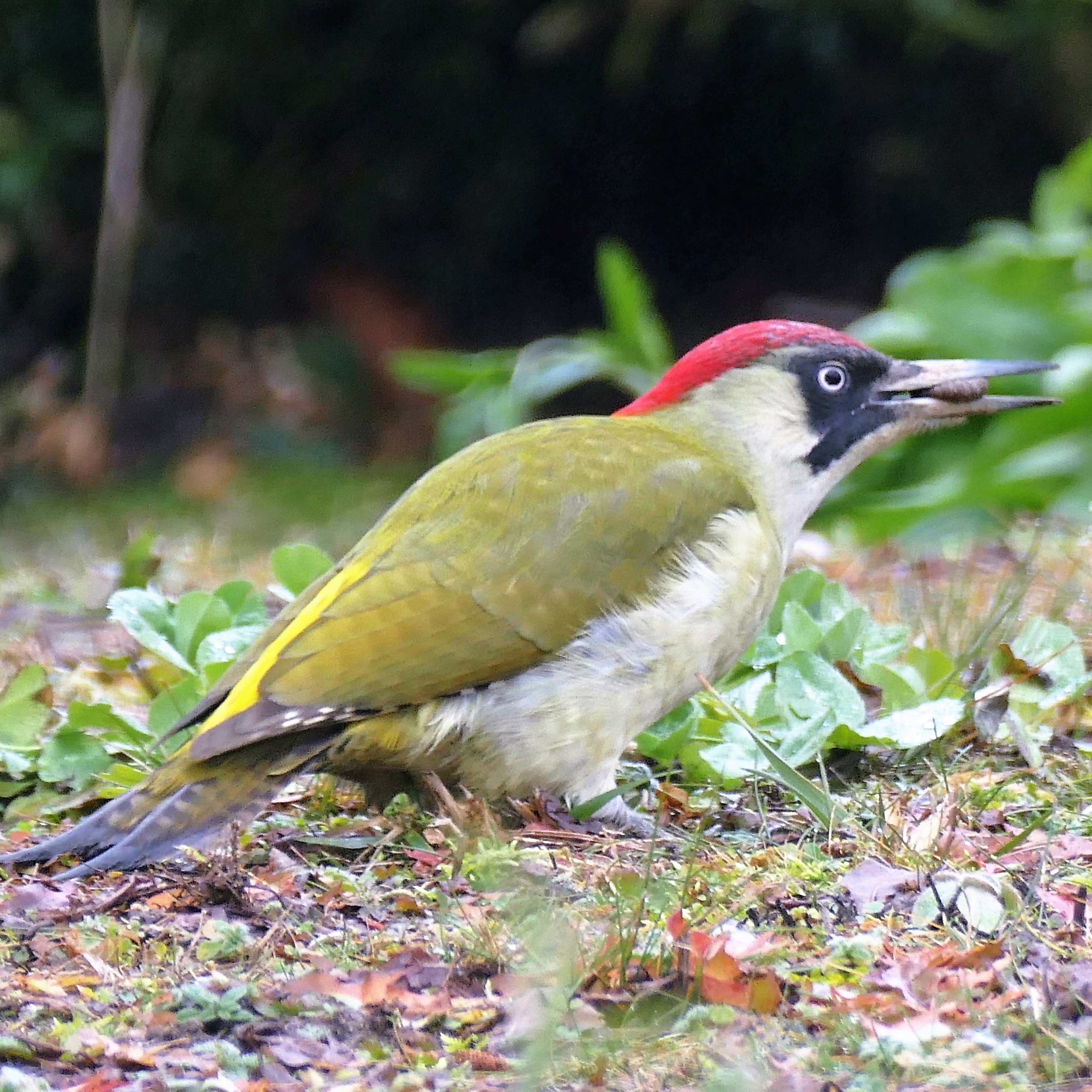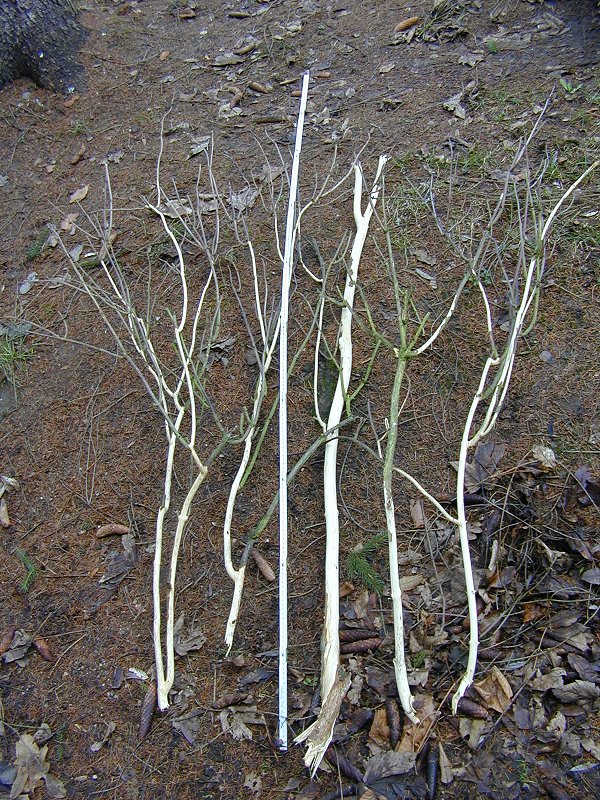|
Burtonhole Lane And Pasture
Burtonhole Lane and Pasture is a Site of Borough Importance for Nature Conservation, Grade II, between Mill Hill and Totteridge in the London Borough of Barnet. It consists of Burtonhole Lane between Partingdale Lane and Burtonhole Close, a footpath east from Burtonhole Lane towards Folly Brook, two fields south of the footpath, and a narrow belt of privately owned woodland north of the footpath. Burtonhole Brook, a tributary of Folly Brook, crosses Burtonhole Lane and the fields. Burtonhole Lane is an old green lane which is now a public footpath and bridleway. It is flanked by tall hedgerows and woodland strips, which support a good variety of shrubs and a number of stately trees, most of them oak and ash. Birds include chaffinch, goldcrest, and green woodpecker, while mammals include stoat, weasel and bank vole. Frogs breed in a wet ditch at the base of the hedgerows. The fields are old London clay grassland, dominated by Yorkshire fog with some tufted hair-grass. Damper a ... [...More Info...] [...Related Items...] OR: [Wikipedia] [Google] [Baidu] |
European Green Woodpecker
The European green woodpecker (''Picus viridis'') is a large green woodpecker with a bright red crown and a black moustache. Males have a red centre to the moustache stripe which is absent in females. It is resident across much of Europe and the western Palearctic but in Spain and Portugal it is replaced by the similar Iberian green woodpecker (''Picus sharpei''). The European green woodpecker spends much of its time feeding on ants on the ground and does not often 'drum' on trees like other woodpecker species. Though its vivid green and red plumage is particularly striking, it is a shy bird, and is more often heard than seen, drawing attention with its loud calls. A nest hole is excavated in a tree; four to six eggs are laid which hatch after 19–20 days. Taxonomy The European green woodpecker was formally described by the Swedish naturalist Carl Linnaeus in 1758 in the tenth edition of his ''Systema Naturae'' under its current binomial name ''Picus viridis''. The type lo ... [...More Info...] [...Related Items...] OR: [Wikipedia] [Google] [Baidu] |
Nature Reserves In Barnet
The London Borough of Barnet, on the northern outskirts of London, is mainly residential, but it has large areas of green space and farmland. The spread of suburban development into the countryside was halted by the designation of a statutory Green Belt around London after the Second World War, and almost one third of Barnet's area of is Green Belt. Without this control, Barnet would be very different today, and this list of nature reserves would be much shorter. Most of Barnet lies over London Clay, which is poor for agriculture, and open land is mainly used for activities such as horse grazing, playing fields, parks and golf courses. Features of the traditional agricultural landscape have survived, such as old hedgerows, ancient trees and areas of herb-rich grassland. Some hay meadows have a large diversity of wild flowers, and the London Ecology Unit (LEU) described them as one of Barnet's most important ecological assets. Barnet has large areas with designations intended t ... [...More Info...] [...Related Items...] OR: [Wikipedia] [Google] [Baidu] |
Barnet Parks And Open Spaces
The London Borough of Barnet, located on the northern periphery of London and having much of the area within its boundaries in the Metropolitan Green Belt, has many parks and open spaces. In addition there are large areas taken over by cemeteries and golf courses, and part of Hampstead Heath. Parks Premier Parks Barnet describes its 16 main open spaces as 'premier parks', seven of which achieved a Green Flag Award for 2009/10: * Childs Hill Park and Basing Hill Park, Childs Hill * Cherry Tree Wood, East Finchley * Edgwarebury Park, Edgware * Friary Park, Friern Barnet * Hendon Park, Hendon * Lyttelton Playing Fields, Hampstead Garden Suburb * Mill Hill Park, Mill Hill * Oak Hill Park, East Barnet * Old Court House Recreation Ground, High Barnet * Sunny Hill Park, Hendon * Swan Lane Open Space, Whetstone * Tudor Sports Ground, New Barnet * Victoria Park, Finchley Central * Victoria Recreation Ground, New Barnet * Watling Park, Burnt Oak * West Hendon Playing Fields, West H ... [...More Info...] [...Related Items...] OR: [Wikipedia] [Google] [Baidu] |
Deschampsia Cespitosa
''Deschampsia cespitosa'', commonly known as tufted hairgrass or tussock grass, is a perennial tufted plant in the grass family Poaceae. Distribution of this species is widespread including the eastern and western coasts of North America, parts of South America, Eurasia and Australia. The species is cultivated as an ornamental garden plant, and numerous cultivars are available. The cultivars 'Goldschleier' and 'Goldtau' have gained the Royal Horticultural Society's Award of Garden Merit. It is a larval host to the Juba skipper and the umber skipper. Description A distinguishing feature is the upper surface of the leaf blade which feels rough and can cut in one direction, but is smooth in the opposite direction. The dark green upper sides of the leaves are deeply grooved. It can grow to tall, and has a long, narrow, pointed ligule. It flowers from June until August. It can be found on all types of grassland, although it prefers poorly drained soil. It forms a major componen ... [...More Info...] [...Related Items...] OR: [Wikipedia] [Google] [Baidu] |
Holcus Lanatus
''Holcus lanatus'' is a perennial grass. The specific epithet ' is Latin for 'woolly' which describes the plant's hairy texture. Common names include Yorkshire fog, tufted grass, and meadow soft grass. In North America, where it is an invasive species, names include velvet grass and common velvet grass.Hubbard, C. E. ''Grasses''. Harmondsworth: Penguin Books. 1976. Yorkshire Fog. Garden Organic. Henry Doubleday Research Association (HDRA). In parts of northern Europe the grass is a common native species and a hardy pasture grass. Characteristics and hybrids  ''Holcus lanatus'' has velvety grey-green leaves. ...
''Holcus lanatus'' has velvety grey-green leaves. ...
[...More Info...] [...Related Items...] OR: [Wikipedia] [Google] [Baidu] |
Bank Vole
The bank vole (''Myodes glareolus'') is a small vole with red-brown fur and some grey patches, with a tail about half as long as its body. A rodent, it lives in woodland areas and is around in length. The bank vole is found in much of Europe and in northwestern Asia. It is native to Great Britain but not to Ireland, where it has been accidentally introduced, and has now colonised much of the south and southwest. The bank vole lives in woodland, hedgerows and other dense vegetation such as bracken and bramble. Its underground chamber is lined with moss, feathers and vegetable fibre and contains a store of food. It can live for eighteen months to two years in the wild and over 42 months in captivity and is mostly herbivorous, eating buds, bark, seeds, nuts, leaves and fruits and occasionally insects and other small invertebrates. It readily climbs into scrub and low branches of trees although it is not as versatile as a mouse. It breeds in shallow burrows, the female rearing about ... [...More Info...] [...Related Items...] OR: [Wikipedia] [Google] [Baidu] |
Weasel
Weasels are mammals of the genus ''Mustela'' of the family Mustelidae. The genus ''Mustela'' includes the least weasels, polecats, stoats, ferrets and European mink. Members of this genus are small, active predators, with long and slender bodies and short legs. The family Mustelidae, or mustelids (which also includes badgers, otters, and wolverines), is often referred to as the "weasel family". In the UK, the term "weasel" usually refers to the smallest species, the least weasel (''M. nivalis''), the smallest carnivoran species. Least weasels vary in length from , females being smaller than the males, and usually have red or brown upper coats and white bellies; some populations of some species moult to a wholly white coat in winter. They have long, slender bodies, which enable them to follow their prey into burrows. Their tails may be from long. Weasels feed on small mammals and have from time to time been considered vermin because some species took poultry from far ... [...More Info...] [...Related Items...] OR: [Wikipedia] [Google] [Baidu] |
Stoat
The stoat (''Mustela erminea''), also known as the Eurasian ermine, Beringian ermine and ermine, is a mustelid native to Eurasia and the northern portions of North America. Because of its wide circumpolar distribution, it is listed as Least Concern on the IUCN Red List. It is distinct from the long-tailed weasel (''Neogale frenata''), also known as the "masked ermine", or "big stoat"; the two species are visually similar, especially the black tail tip. The name ermine () is used for species in the genus '' Mustela'', especially the stoat, in its pure white winter coat, or the fur thereof. Introduced in the late 19th century into New Zealand to control rabbits, the stoat has had a devastating effect on native bird populations. It was nominated as one of the world's top 100 "worst invaders". Ermine fur was used in the 15th century by Catholic monarchs, who sometimes used it as the mozzetta cape. It has long been used on the ceremonial robes of members of the UK House of Lords. ... [...More Info...] [...Related Items...] OR: [Wikipedia] [Google] [Baidu] |
Goldcrest
The goldcrest (''Regulus regulus'') is a very small passerine bird in the kinglet family. Its colourful golden crest feathers, as well as being called the "king of the birds" in European folklore, gives rise to its English and scientific names. The scientific name, ''R. regulus'', means king or knight. Several subspecies are recognised across the very large distribution range that includes much of the Palearctic and the islands of Macaronesia and Iceland. Birds from the north and east of its breeding range migrate to winter further south. This kinglet has greenish upper-parts, whitish under-parts, and has two white wingbars. It has a plain face contrasting black irises and a bright head crest, orange and yellow in the male and yellow in the female, which is displayed during breeding. It superficially resembles the common firecrest (''Regulus ignicapilla''), which largely shares its European range, but the latter's bronze shoulders and strong face pattern are distinctive. T ... [...More Info...] [...Related Items...] OR: [Wikipedia] [Google] [Baidu] |
Common Chaffinch
The common chaffinch or simply the chaffinch (''Fringilla coelebs'') is a common and widespread small passerine bird in the finch family. The male is brightly coloured with a blue-grey cap and rust-red underparts. The female is more subdued in colouring, but both sexes have two contrasting white wing bars and white sides to the tail. The male bird has a strong voice and sings from exposed perches to attract a mate. The chaffinch breeds in much of Europe, across the Palearctic to Siberia and in northwestern Africa. The female builds a nest with a deep cup in the fork of a tree. The clutch is typically four or five eggs, which hatch in about 13 days. The chicks fledge in around 14 days, but are fed by both adults for several weeks after leaving the nest. Outside the breeding season, chaffinches form flocks in open countryside and forage for seeds on the ground. During the breeding season, they forage on trees for invertebrates, especially caterpillars, and feed these to ... [...More Info...] [...Related Items...] OR: [Wikipedia] [Google] [Baidu] |



.jpg)


